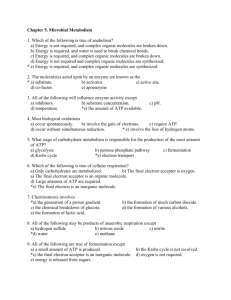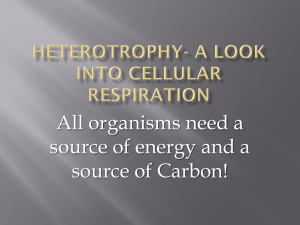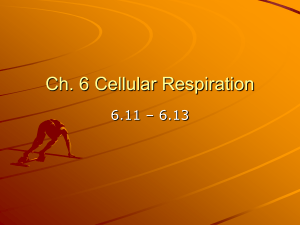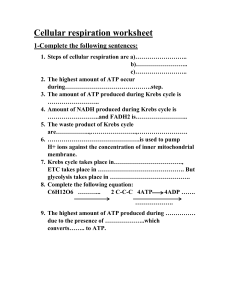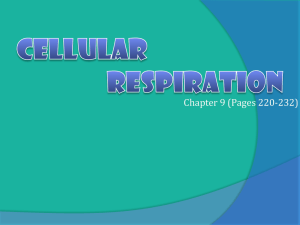Cell Respiration in Review 1.Most Eukaryotic cells produce about
advertisement
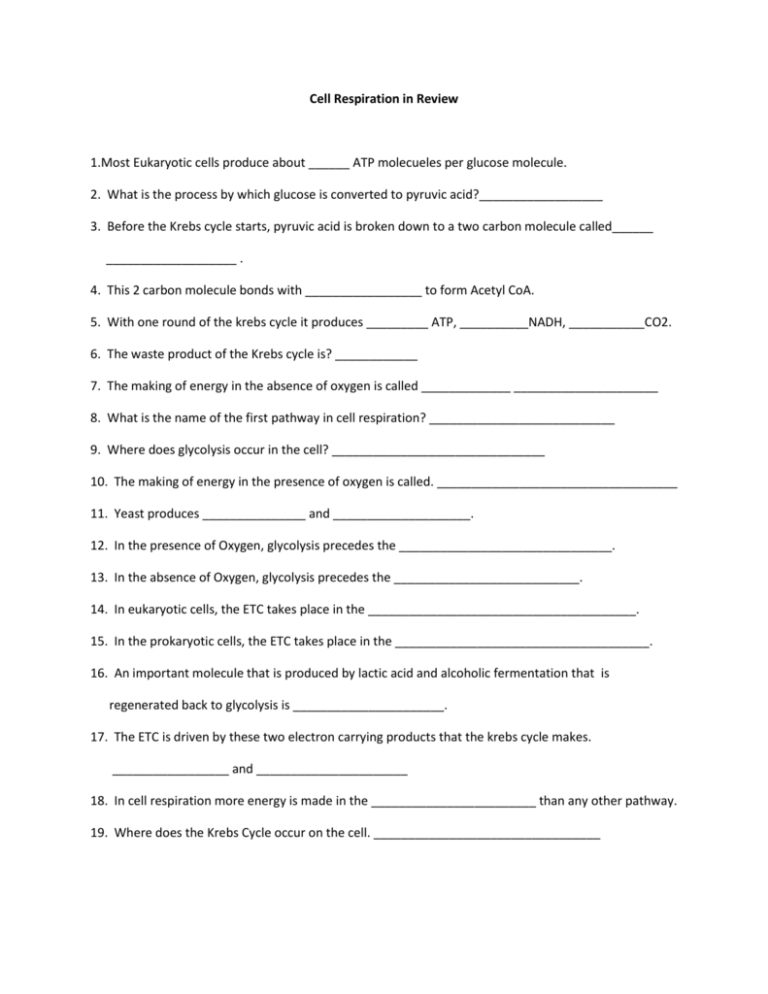
Cell Respiration in Review 1.Most Eukaryotic cells produce about ______ ATP molecueles per glucose molecule. 2. What is the process by which glucose is converted to pyruvic acid?__________________ 3. Before the Krebs cycle starts, pyruvic acid is broken down to a two carbon molecule called______ ___________________ . 4. This 2 carbon molecule bonds with _________________ to form Acetyl CoA. 5. With one round of the krebs cycle it produces _________ ATP, __________NADH, ___________CO2. 6. The waste product of the Krebs cycle is? ____________ 7. The making of energy in the absence of oxygen is called _____________ _____________________ 8. What is the name of the first pathway in cell respiration? ___________________________ 9. Where does glycolysis occur in the cell? _______________________________ 10. The making of energy in the presence of oxygen is called. ___________________________________ 11. Yeast produces _______________ and ____________________. 12. In the presence of Oxygen, glycolysis precedes the _______________________________. 13. In the absence of Oxygen, glycolysis precedes the ___________________________. 14. In eukaryotic cells, the ETC takes place in the _______________________________________. 15. In the prokaryotic cells, the ETC takes place in the _____________________________________. 16. An important molecule that is produced by lactic acid and alcoholic fermentation that is regenerated back to glycolysis is ______________________. 17. The ETC is driven by these two electron carrying products that the krebs cycle makes. _________________ and ______________________ 18. In cell respiration more energy is made in the ________________________ than any other pathway. 19. Where does the Krebs Cycle occur on the cell. _________________________________ 20. What is the chemical equation for cell respiration? _____________________________________________________________ 21. 2 ____________________ molecules result from one glucose molecule in glycolysis. 22. In alcoholic fermentation, ethyl alcohol is produced from this molecule. ________________ 23. What does ATP stand for? ____________________ 24. What does ADP stand for? ____________________ 25. How many ATP are produced in the ETC? ___________________________ 26. Lactic acid buildup in your muscles occur because there is lack of ______________________. 27. At the end of the krebs cycle, before it goes to the ETC, ______________ ATP, ____________NADH, ______________ FADH2, and ________________CO2 molecules are formed. 28. Explain how the CO2 molecules and FADH2 and NADH molecules are formed in the Krebs Cycle. _______________________________________________________________________________ _______________________________________________________________________________ _______________________________________________________________________________ 29. What is the name of the protein in which the Hydrogen ions move back through the mitochondrial membrane that enables ATP to be made? ______________________________ 30. How many additional ATP are made during fermentation? _________________________ 31. Glycolysis makes __________ ATP but the NET gain of ATP is _________________. Explain this. ______________________________________________________________________________ _______________________________________________________________________________





